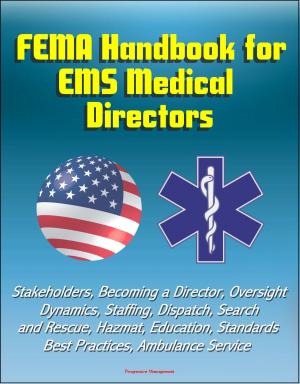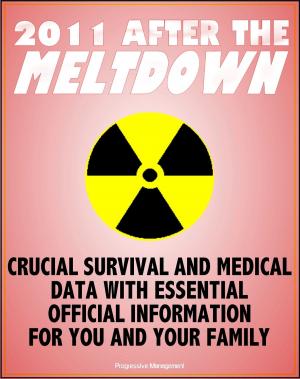Guide to Arctic Security and American Military Implications of Climate Change: Reemergence of the Arctic as a Strategic Location, Taking Command, Managing the Arctic Thaw, Future Naval Operations
Nonfiction, History, Polar Regions, Military, United States| Author: | Progressive Management | ISBN: | 9781311286086 |
| Publisher: | Progressive Management | Publication: | December 1, 2014 |
| Imprint: | Smashwords Edition | Language: | English |
| Author: | Progressive Management |
| ISBN: | 9781311286086 |
| Publisher: | Progressive Management |
| Publication: | December 1, 2014 |
| Imprint: | Smashwords Edition |
| Language: | English |
Eight military reports and documents provide unique insights into Arctic security issues and American military implications of climate change:
Arctic Security: An Adaptive Approach for a Changing Climate * The Reemergence of the Arctic as a Strategic Location * Taking Command in the Arctic: The Need for a Command Organization in the Arctic Theater * U.S. Arctic Security * Managing the Arctic Thaw: A Joint Interagency Approach to a Potential Hot Spot * The Consequential Challenges of Climate Change * Climate Change Implications to the Global Security Environment, U.S. Interests, and Future Naval Operations * U.S. National Arctic Strategy: Preparing Defensive Lines of Effort for the Arctic
The Arctic is widely regarded as one of the last remaining natural sanctuaries on Earth. Warmer temperatures in the region have opened the eyes of sea-faring nations and motivated the ring of 'Arctic Nations' to officially stake their claims to natural resources, indicating the beginnings of future strife over sovereignty disputes. On the other hand, the outcry of environmental concern for the region has increasingly manifested itself in political discussion, elevating national and regional security concerns to a global level. The research for this paper has shed light on the paths already undertaken toward the security future of the Arctic, and has highlighted the need to focus on future approaches that consider the environmental aspects of inter-connectedness. Unilaterally defending 'national security' interests may lead to further degradation of the natural and political climate in the region with catastrophic consequences. This observation has been the driving force of this paper.
Changes in the Arctic give rise to emerging security challenges at the strategic and operational levels. These challenges include territorial disputes, the potential of new maritime shipping routes, and increased access to highly valuable natural resources. In response to these challenges, international state and commercial interests are moving forward to protect claims and prepare for emerging opportunities in the Arctic. At present, no single Combatant Commander has the lead for meeting the challenges of the Arctic. Unless the United States takes unified action, it may lose diplomatic, informational, military and economic advantages associated with the Arctic. In order to meet the emerging challenges of the Arctic, the U.S. Northern Command must develop and implement a command organization to effectively project U.S. presence, protect national security interests, and coordinate military, interagency, and international efforts in the Arctic theater. This paper analyzes current U.S. policies and strategies that apply to the Arctic and current command organizations that may serve as a model for the Arctic theater. The paper finishes with conclusions concerning the challenges in the Arctic, implications for the Combatant Commander, and recommendations for an effective command organization.
The time to start shaping the U.S. Arctic security interests is now. The Arctic offers both commercial opportunity and security if it is successfully implemented into U.S. national policy objectives and strategy. With 90 billion barrels of oil throughout 400 oil fields, the region is destined to be bustling with exploration in the next ten years. Additionally, global warming trends and shrinking Arctic ice will open waterways and shorten commerce routes between the east and west to create a continuous flow of goods and people through the far north. The time to expand and create new infrastructure consistent with objectives is now. The hazards of waiting too long to fully engage could mean the U.S. loses the opportunity to shape the security, commerce, and environment for the future.
Eight military reports and documents provide unique insights into Arctic security issues and American military implications of climate change:
Arctic Security: An Adaptive Approach for a Changing Climate * The Reemergence of the Arctic as a Strategic Location * Taking Command in the Arctic: The Need for a Command Organization in the Arctic Theater * U.S. Arctic Security * Managing the Arctic Thaw: A Joint Interagency Approach to a Potential Hot Spot * The Consequential Challenges of Climate Change * Climate Change Implications to the Global Security Environment, U.S. Interests, and Future Naval Operations * U.S. National Arctic Strategy: Preparing Defensive Lines of Effort for the Arctic
The Arctic is widely regarded as one of the last remaining natural sanctuaries on Earth. Warmer temperatures in the region have opened the eyes of sea-faring nations and motivated the ring of 'Arctic Nations' to officially stake their claims to natural resources, indicating the beginnings of future strife over sovereignty disputes. On the other hand, the outcry of environmental concern for the region has increasingly manifested itself in political discussion, elevating national and regional security concerns to a global level. The research for this paper has shed light on the paths already undertaken toward the security future of the Arctic, and has highlighted the need to focus on future approaches that consider the environmental aspects of inter-connectedness. Unilaterally defending 'national security' interests may lead to further degradation of the natural and political climate in the region with catastrophic consequences. This observation has been the driving force of this paper.
Changes in the Arctic give rise to emerging security challenges at the strategic and operational levels. These challenges include territorial disputes, the potential of new maritime shipping routes, and increased access to highly valuable natural resources. In response to these challenges, international state and commercial interests are moving forward to protect claims and prepare for emerging opportunities in the Arctic. At present, no single Combatant Commander has the lead for meeting the challenges of the Arctic. Unless the United States takes unified action, it may lose diplomatic, informational, military and economic advantages associated with the Arctic. In order to meet the emerging challenges of the Arctic, the U.S. Northern Command must develop and implement a command organization to effectively project U.S. presence, protect national security interests, and coordinate military, interagency, and international efforts in the Arctic theater. This paper analyzes current U.S. policies and strategies that apply to the Arctic and current command organizations that may serve as a model for the Arctic theater. The paper finishes with conclusions concerning the challenges in the Arctic, implications for the Combatant Commander, and recommendations for an effective command organization.
The time to start shaping the U.S. Arctic security interests is now. The Arctic offers both commercial opportunity and security if it is successfully implemented into U.S. national policy objectives and strategy. With 90 billion barrels of oil throughout 400 oil fields, the region is destined to be bustling with exploration in the next ten years. Additionally, global warming trends and shrinking Arctic ice will open waterways and shorten commerce routes between the east and west to create a continuous flow of goods and people through the far north. The time to expand and create new infrastructure consistent with objectives is now. The hazards of waiting too long to fully engage could mean the U.S. loses the opportunity to shape the security, commerce, and environment for the future.















